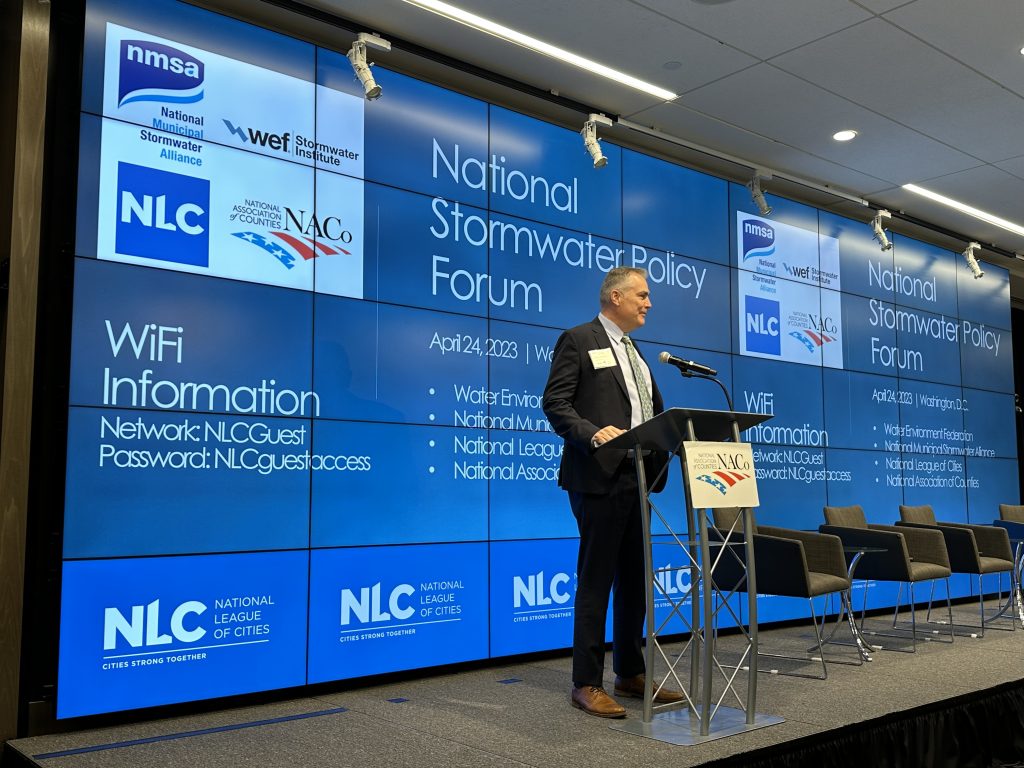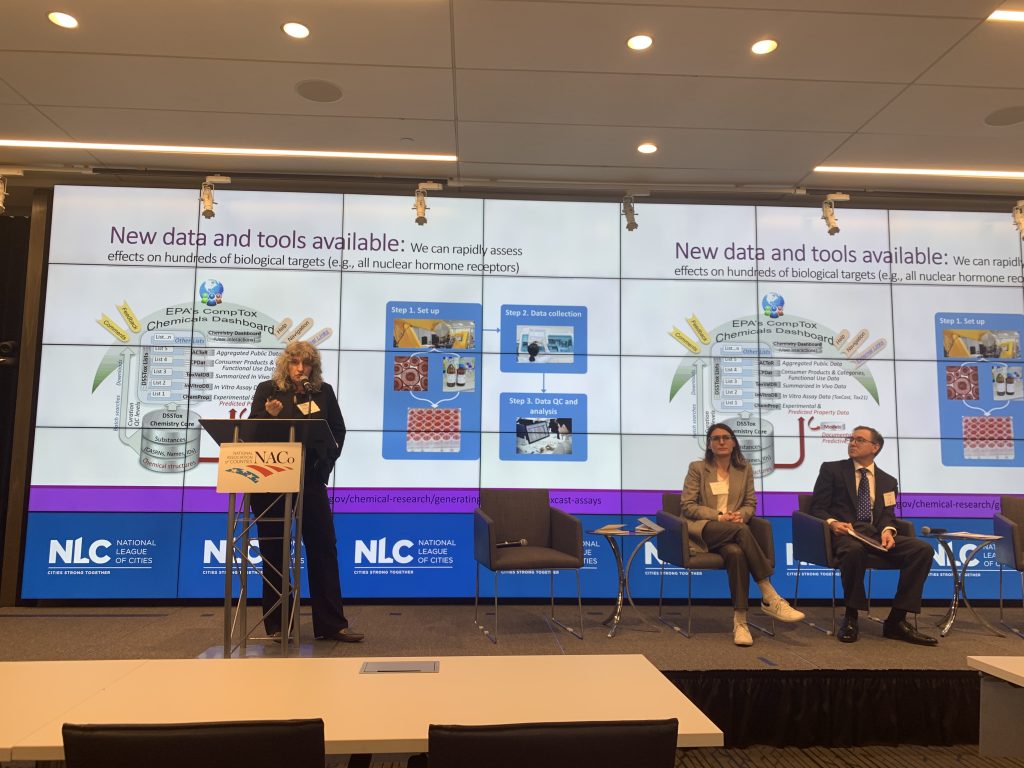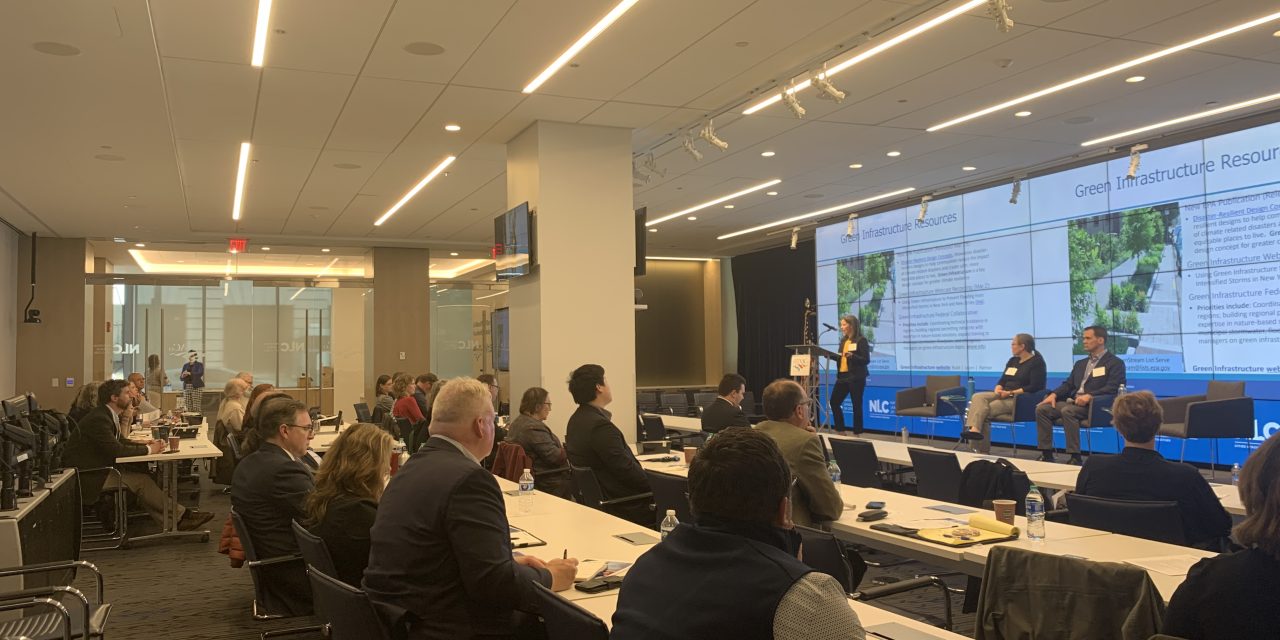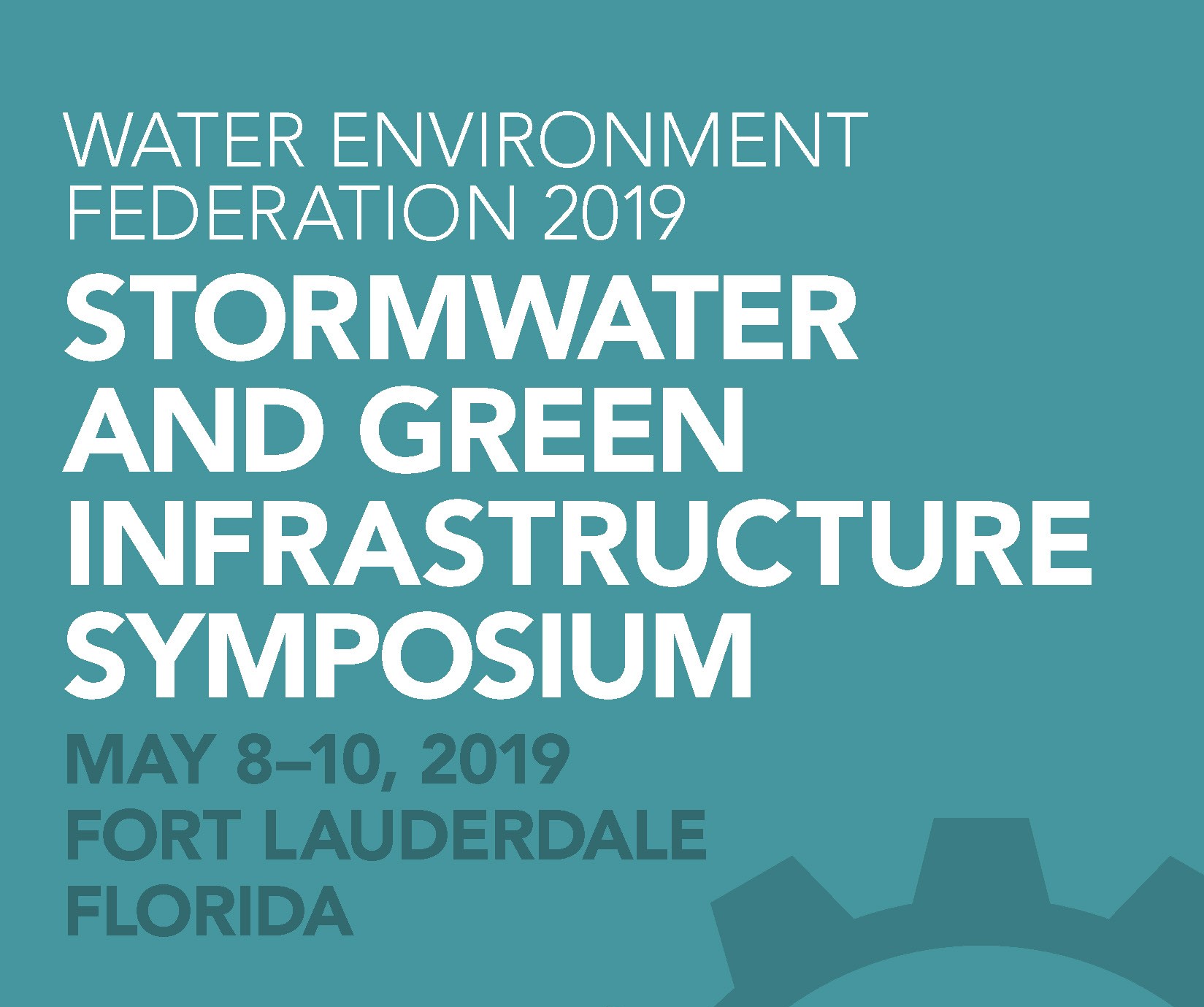On April 24, approximately 50 stormwater professionals from all corners of the U.S. met in Washington, D.C., to participate in the seventh-annual National Stormwater Policy Forum.
The event gave participants an opportunity to engage with U.S. decisionmakers about the latest legislative, regulatory, and political trends shaping the U.S. stormwater sector.
The forum also provided a platform for such agencies and organizations as the U.S. Environmental Protection Agency (EPA), U.S. National Oceanic and Atmospheric Administration (NOAA), and American Rivers (Washington, D.C.) to deliver program updates.
“WEF and its partners were overjoyed to see stormwater professionals from across the U.S. convene in our nation’s capital to advocate for solutions to the sector’s long list of challenges, such as aging infrastructure, workforce shortages, and funding gaps,” said Bianca Pinto, WEF Stormwater Practice Lead. “Whether you attended in-person or online, we sincerely thank you for taking the time to join us in our work to push for a stronger, more adaptable, and more equitable stormwater management landscape.”
The in-person event, which also was live streamed, was organized by the Water Environment Federation (WEF; Alexandria, Virginia) and the National Municipal Stormwater Alliance (NMSA; Alexandria, Virginia) in cooperation with the National League of Cities (Washington, D.C.) and National Association of Counties (Washington, D.C.).
Insights From State and Federal Leaders
The event began with a welcome from forum organizers. Then, Evan Branosky, Chief Stormwater Policy Advisor for the Virginia Department of Environment Quality (VDEQ), delivered the keynote address. He described innovative ways that state governments can support stronger, community scale stormwater management programs.

Branosky discussed recent VDEQ efforts to consolidate years of VDEQ guidance and resources into a centralized Virginia Stormwater Handbook. This guide grants communities in the state easy access to up-to-date information on regulations, funding mechanisms, design specifications, and more. He also described a regional partnership between the state government and Virginia Tech (Blacksburg) that focuses on developing innovative approaches to stem the tide of nitrogen and phosphorus from agriculture into the Chesapeake Bay via runoff. His remarks also included plans to launch a new, statewide trading platform for water-related commodities in 2024.
Next, policy staff representing both the U.S. Senate and U.S. House of Representatives talked about NOAA efforts to substantially update its Atlas 14 program using funds from the 2021 Bipartisan Infrastructure Law. The upcoming Atlas 15 program will provide more accurate, up-to-date, and dynamic precipitation frequency data to assist in stormwater infrastructure planning across the U.S. — crucial information for designing climate-resilient flood-control systems.
Later in the day, EPA personnel briefed the audience about EPA’s recent actions to support stormwater infrastructure implementation as well as coordinate research, information sharing, and regulation. Among others, these actions include
- a new website that provides guidance on best practices for off-site stormwater management,
- the launch of a new public-outreach toolkit known as Stormwater Smart,
- a new EPA publication on disaster-resilient green infrastructure design, and
- an update on the Green Infrastructure Federal Collaborative — an initiative launched in 2021 to coordinate green infrastructure facilitation activities across the federal government.
EPA representatives also discussed ongoing research on such topics as stormwater reuse, source control, integrated planning, and emerging contaminants.
Recommendations From the Stormwater Sector
Before each annual National Stormwater Policy Forum, WEF and NMSA develop a list of recommendations that outlines ways the federal government can help U.S. communities and utilities better manage stormwater. This year’s Recommendations to Improve the Stormwater Program in the U.S. documentspecifies four key funding and policy priorities for the next fiscal year.
Although the Bipartisan Infrastructure Law authorized an unprecedented level of funding for various stormwater programs, many of these provisions have not received full appropriations stipulated under the legislation. WEF and NMSA urge U.S. Congress to fund fully these previously authorized programs during the fiscal year 2024 budgeting process. One example of these programs is establishing Centers of Excellence for Stormwater Control Infrastructure Technologies.
The recommendations document also calls for new federal infrastructure funding options, several of which could be easily established by modifying existing programs. As only 1.8% of Clean Water State Revolving Fund loans have been used for stormwater investments over the program’s 30-year duration, authors call for a new grant program for regional stormwater infrastructure that would eventually mature into a full-fledged Stormwater State Revolving Fund program.
Another recommendation is to create two new federal programs that target specific technical needs in the stormwater sector. In one program, federal agencies should allocate resources to help communities develop local- and regional-scale computer models that more accurately track real-time rainfall and flooding during storms, as well as provide more detail about forecasted precipitation. The second effort should target source control for stormwater pollutants of concern by establishing a permanent EPA program focusing on keeping per- and poly-fluoroalkyl substances (PFAS), microplastics, and tire-wear derivatives out of runoff.
A Sneak Peek at Results From 2022 MS4 Needs Survey
WEF also unveiled preliminary results from its 2022 National MS4 Needs Assessment Survey, which take stock of common challenges faced by regulated stormwater organizations throughout the U.S. This third installment in the biennial series was administered from late 2022 through early 2023.

Just under 650 organizations responded. They represent agencies of all sizes and geographic contexts. Three similarly ranked challenges emerged: aging infrastructure, funding needs, and staffing challenges.
Respondents also indicated they needed more information how to access existing funding and financing opportunities to support stormwater programs and infrastructure, as well as best practices for long-term, post-construction monitoring and maintaining of stormwater infrastructure performance.
Survey results also highlighted a need for proper protocols to help stormwater managers develop long-term infrastructure resilience plans as the effects of climate change become more apparent. Over 90% of respondents had not prepared a forward-looking stormwater infrastructure resilience plan. Additionally, nearly 75% of respondents had not updated local design standards for stormwater infrastructure according to recent data on the increasing volume and frequency of precipitation in their region. This preparedness gap, respondents report, largely results from a lack of proper funding to support long-term planning activities.
WEF plans to release full findings from the 2022 National MS4 Needs Assessment Survey later this year.
Top image courtesy of Bianca Pinto/WEF

ABOUT THE AUTHOR
Justin Jacques is editor of Stormwater Report and a staff member of the Water Environment Federation (WEF). In addition to writing for WEF’s online publications, he also contributes to Water Environment & Technology magazine. Contact him at jjacques@wef.org.






